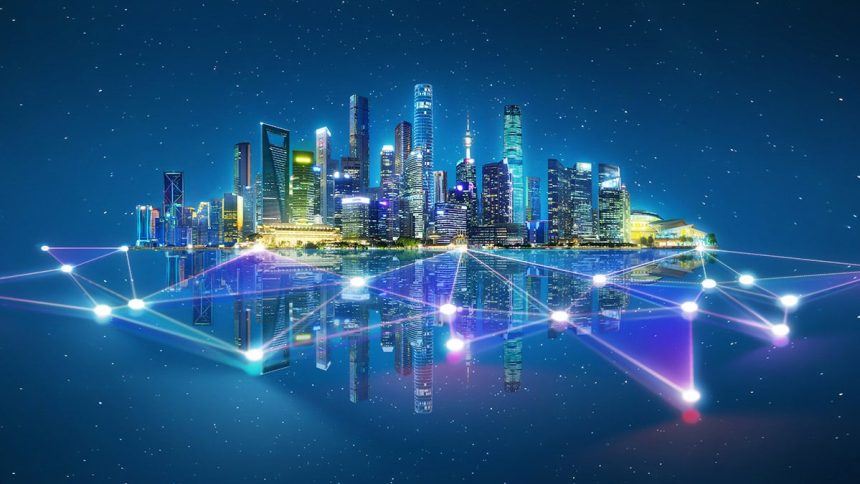As urban centers in Canada and the USA evolve into smart cities, integrating cutting-edge technologies to enhance infrastructure and services, the importance of robust cybersecurity measures becomes paramount. Smart cities, characterized by interconnected systems and data-driven decision-making, face unique cybersecurity challenges. This article explores how AI can fortify cybersecurity efforts to protect urban infrastructure in these regions.
The Smart City Revolution
Smart cities leverage a blend of IoT devices, big data, and AI to create efficient, responsive urban environments:
- IoT Devices: These devices gather and transmit data to optimize city functions such as traffic flow, energy management, and public services.
- Data Analytics: Processing large datasets to provide actionable insights for improving city operations.
- AI Integration: Utilizing AI to predict trends, automate systems, and enhance overall service delivery.
Pioneering cities like Toronto, Vancouver, New York, and San Francisco demonstrate the potential and complexity of smart city initiatives.
Key Cybersecurity Challenges
The intricate web of smart city technologies introduces several cybersecurity vulnerabilities:
- Insecure IoT Devices: With limited security capabilities, IoT devices are often targets for cyber attacks.
- Data Privacy Concerns: The massive volume of data collected raises concerns about securing and protecting sensitive information.
- Interconnected System Risks: A breach in one system can quickly compromise the entire network due to the interconnected nature of smart cities.
- Sophisticated Cyber Threats: Attackers are continually developing sophisticated methods to infiltrate city systems.
AI Solutions for Cybersecurity
AI technologies offer robust solutions to these challenges by enhancing detection, prevention, and response mechanisms:
- Real-Time Threat Monitoring: AI continuously analyzes data streams to identify and respond to anomalies and potential security threats instantly.
- Predictive Threat Analysis: AI examines historical data to forecast vulnerabilities, allowing for pre-emptive security measures.
- Automated Response Systems: AI can handle routine security tasks, from detecting incidents to prioritizing alerts and implementing responses, reducing reliance on human intervention.
- Behavioral Analytics: Monitoring device and user behavior to detect unusual activities, which helps in identifying insider threats.
- Enhanced IoT Security: AI-driven solutions provide real-time monitoring and automatic updates to safeguard IoT devices against new threats.
Practical Implementations
- Toronto: Employs AI to secure its smart infrastructure by monitoring network traffic and identifying anomalies, significantly mitigating cyber attack risks.
- New York: Utilizes a comprehensive AI-based cybersecurity framework to safeguard critical infrastructure, enhancing resilience against cyber threats.
- San Francisco: Integrates AI into its IoT security strategy, ensuring continuous monitoring and timely updates to protect smart city devices.
Strategic Recommendations
To effectively deploy AI in securing smart cities, policymakers and urban planners should consider:
- Developing AI Governance Policies: Establishing frameworks that ensure ethical, transparent, and accountable use of AI in cybersecurity.
- Strengthening Data Security: Implementing advanced measures like encryption, access control, and regular security audits.
- Investing in AI Research: Continuous investment in AI R&D to stay ahead of evolving cyber threats, in collaboration with academia and industry experts.
- Routine Testing and Updates: Regularly updating and testing AI systems to identify and mitigate vulnerabilities.
- Promoting Collaboration: Encouraging information sharing among cities, governments, and the private sector to enhance collective cybersecurity efforts.
Looking Ahead
As AI technology advances, its role in smart city cybersecurity will become increasingly critical:
- Enhanced Threat Intelligence: AI will offer more sophisticated threat detection capabilities, providing real-time insights.
- Resilient AI Models: Continuous improvements in AI will lead to more robust models that can withstand evolving threats.
- Deeper IoT Integration: Stronger integration of AI and IoT will improve the security and functionality of smart city systems.
- Increased Public Engagement: Educating the public on cybersecurity and the role of AI will build trust and support for smart city initiatives.
Conclusion
The journey towards smart cities in North America necessitates robust cybersecurity measures to protect urban infrastructure. AI stands at the forefront of this effort, offering powerful tools to detect, prevent, and respond to cyber threats. By leveraging AI, cities can ensure the safety and privacy of their citizens, while enhancing the efficiency and resilience of their urban ecosystems. Continuous innovation, strategic implementation, and public cooperation are essential to secure the future of smart cities.








